Focus Bracketing with Sony Alpha 7 III camera
The Sony Alpha 7 III camera is a really nice tool. Unfortunately, it also lacks some important features like creating time lapse videos, supporting long exposures (bulb) or automatic focus bracketing. So here is a collection of different articles and tips all around doing focus stacking with a Sony A7 III camera.
Background details of the focus bracketing technology
What is Focus Bracketing and Focus Stacking? In short: A method to take multiple shots with different focus distance being combined to a single perfect sharp photo, especially in stills, macros or even landscapes.
According to Wikipedia: "Focus bracketing is useful in situations with limited depth of field, where one may want to make a series of exposures with different positions of the focal plane and then choose the one in which the largest portion of the subject is in focus, or combine the in-focus portions of multiple exposures digitally (focus stacking). Usually this involves the use of software with unsharp masking, a filtering algorithm that removes out-of-focus portions of each exposure. The in-focus portions are then "stacked"; combined into a single image."
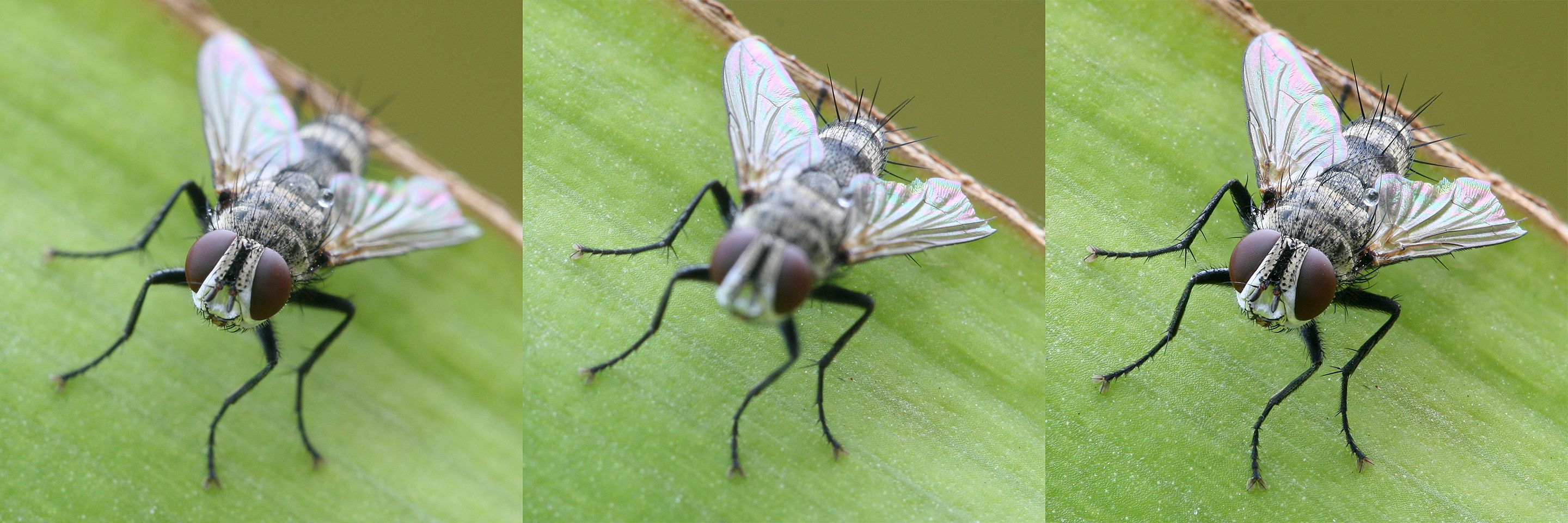
Modern cameras like the Fujifilm X-T3 or Nikon Z6/Z7 provide functions to support the photographer. For example the Nikon Z7 includes a feature known as “focus shift”, and with focus shift enabled, the Z7 will take a series of photos focused at different distances, starting from front to back. The idea is that you later combine these photos in post-processing software to create a final image with huge depth of field. The Fujifilm X-T3 has a focus bracketing menu where you choose the number of frames you’ll shoot, your step, which corresponds to the difference in focus distance for each shot, and your interval, which is how many seconds between each frame.
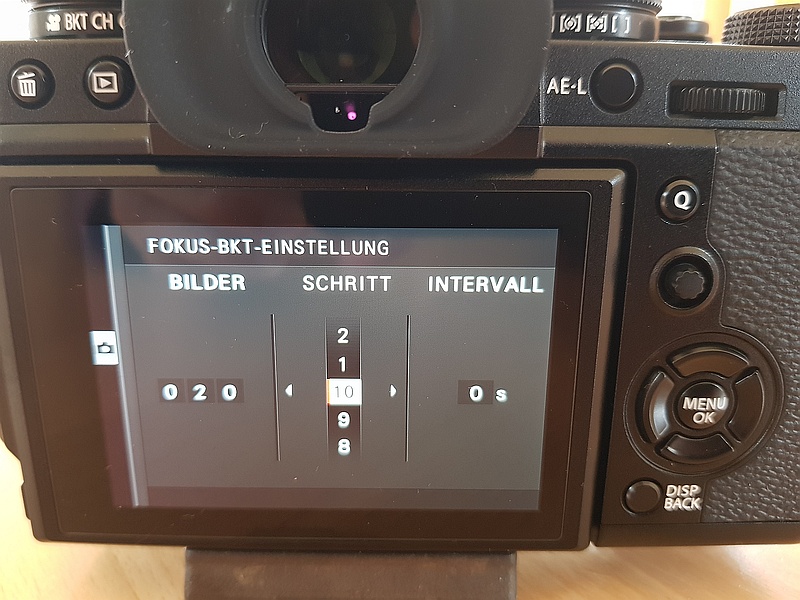
Unfortunately the Sony Alpha 7 III does not have such a feature. So the only chance either is to take the shots manually or use some non-Sony software tools or hardware extensions.
Software tools for focus improvements and other goodies
The Sony Alpha 7 III camera can be connected to a PC via USB or to a smartphone via WLAN (Android and iPhone iOS). There are some applications available which take control of the connected camera and help on doing the series of photos with adapted focus automatically. Here is a list of interesting programs I found:
1. Free Focus Stacking tool for Windows: "B8Stack"
Download the tool and its source code for Windows from:
https://github.com/binarycamera/b8stack
or for Mac (OS-X):
https://github.com/paulrbarnard/stacker
B8Stack is a focus stacking application for Sony A7 cameras. This application simulates user input for the Sony Imagine Edge Remote application in order to implement a basic focus stacking mechanism. The user can specify the number of pictures to take, the step width of the focus shift for each picture and the shift direction. The tool is working with a Desktop PC connection only, it can be downloaded for free and with the source code (WinForms C#).
I have tested B8Stack successfully under Windows 10 with my A7 III connected via USB and Image Edge Remote version 1.4.00.01241.
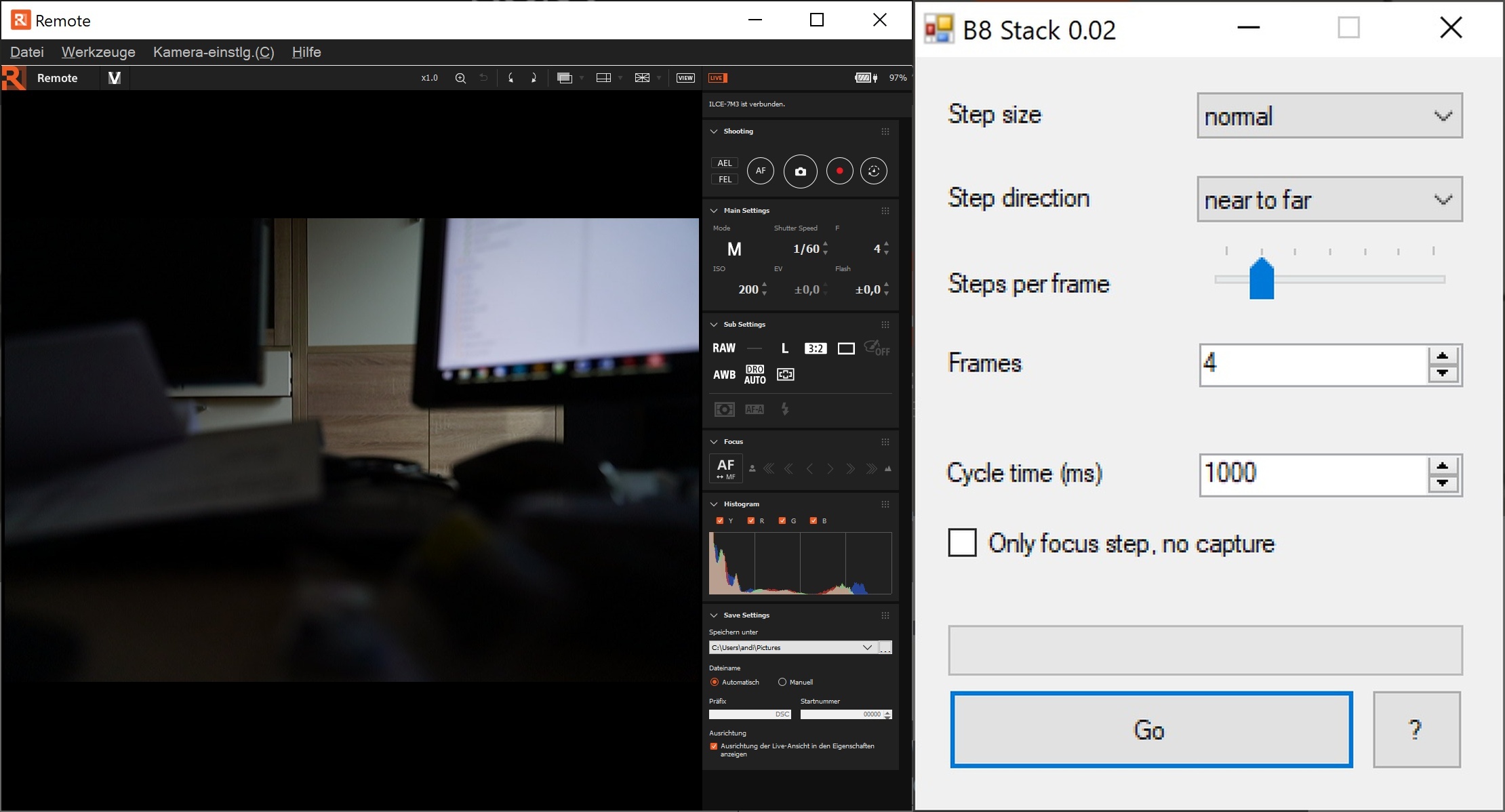
Conclusion: This is a free working option for focus stacking when a PC connection is available. Btw: The Sony Remote tool seems to have problems with High-DPI screens (e.g. 4k UHD resolution); the application is working, but all the buttons, menu bars etc are very small and hardly readable.
Discussions about automatic focus stacking with Sony and B8Stack tool:
https://www.dpreview.com/forums/post/61574435
Other discussion about app development for A7R III and the Sony camera APIs:
https://www.dpreview.com/forums/thread/4268675
2. Traumflieger High Speed Bracketing (Sony+Windows)
This is also an additional program which allows automatic focus Bracketing functions on Sony A7 models (A7 III, A7R III). It works in conjunction with Sony's "Imaging Edge" program, which adds a fully automatic focus bracketing feature. The Traumflieger software is loaded in background and makes it possible to take a defined number of focus steps. The step size is selected in such a way that there are no gaps in the stack. The program can be bought for a few euros but I haven't tested it yet. Details can be found on the following website:
3. gPhoto2
gPhoto2 is a free, redistributable, ready to use set of digital camera software applications for Unix-like systems, written by a whole team of dedicated volunteers around the world. It supports more than 2500 cameras. Unfortunately, the Sony Alpha 7 III is not yet supported, maybe in a few month?
Hardware tools to bring the missing focus bracketing function
There are a number of hardware extensions for tethering and control the camera via USB, Ethernet or WLAN. The following list gives an overview about some interesting tools:
1. CamFi (CF102), CamFi Pro and CamFi Plus
In contrast to the described Software only solutions there is also an hardware extension for the Sony A7 III camera (and others) available. This is a useful tool when a PC is not available and also allows outdoor support for automatic focus bracketing. It can be connected to the USB port on the camera and establish a connection to a smartphone via WLAN. Camfi can use Android and iOS devices to be your viewfinder. It can stream live view from the camera to your devices wirelessly.
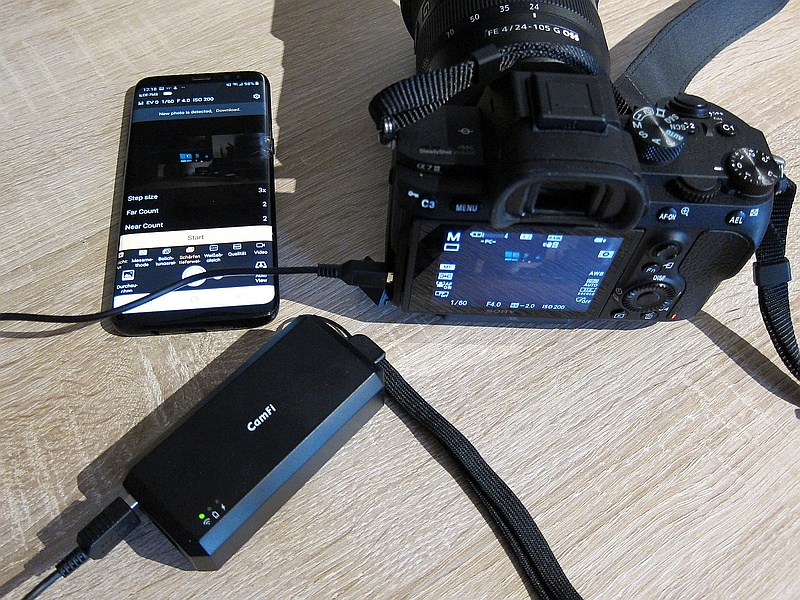
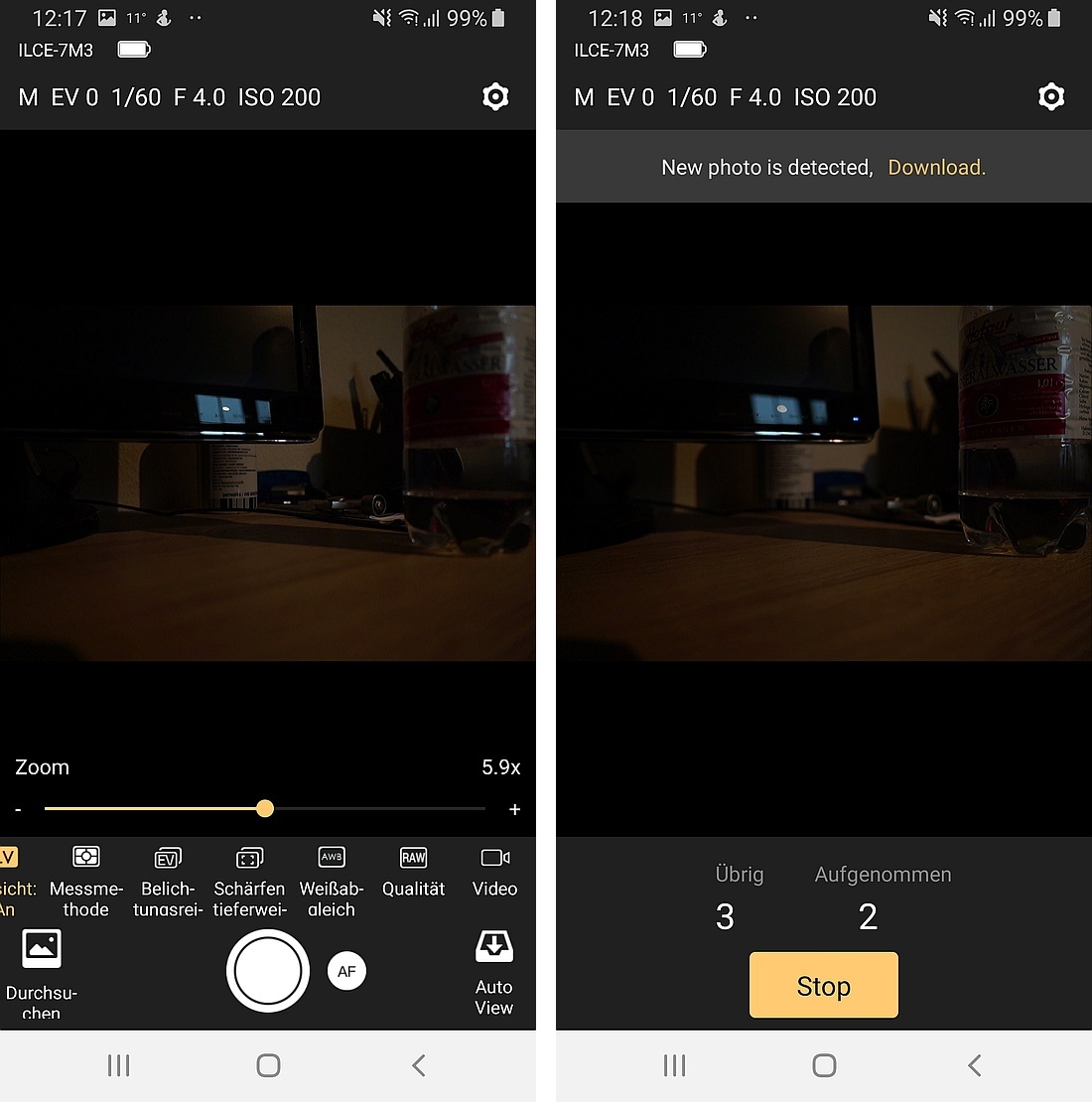
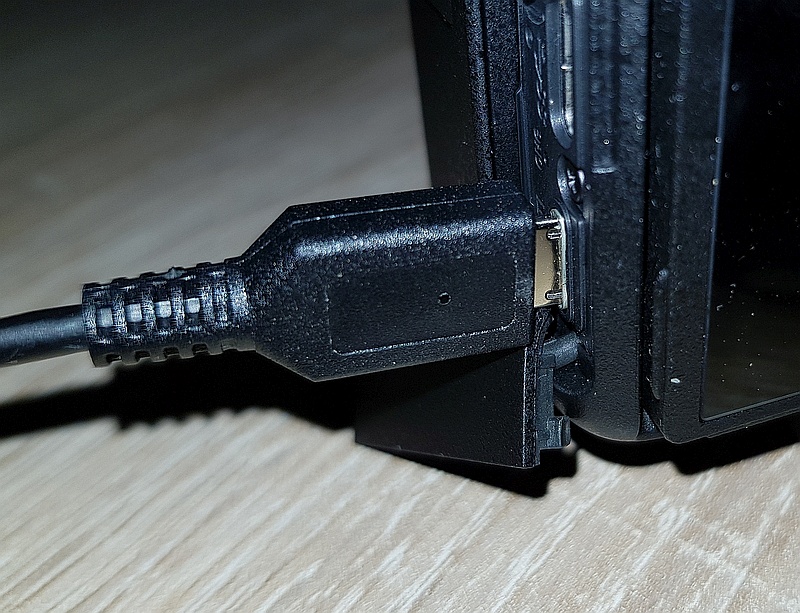
I have tested CamFi (CF102) together with my Sony A7 III camera and at first it seems a bit complicated but at the end it is working. I can connect with my Samsung Galaxy S8 and use the phone to control the camera. Also a combination of HDR and focus stacking together is possible. For my first impression the whole process is a bit slow and there is a 1 sec delay or so between each shot. But for most situations this should be ok anyway.
Btw: The USB plug unfortunately does not quite fit into the socket on the camera as can be seen on the photo above. Even though this is the original USB cable from my Sony camera! Ohh Sony...
2. Arsenal, the smart camera assistant
This tool is a hardware device that can plug into many DSLR or mirrorless cameras. It's designed to automate a lot of shooting situations and also provides automatic focus bracketing/stacking support. Right now it seems like this tool has lots of cool ideas and features but is still in an early state and so a bit buggy, especially with the Sony Alpha 7 III camera. I haven't tested it yet but will keep my eye on what is happening with Arsenal in the next time. More details can be found on its website:
Last hope: SONY. Dear Sony team, please provide us a new firmware update with the best focus bracketing function of all cameras soon. Many thanks in advance!
You also have a Sony Alpha 7 III (A7-3 or A7R-3)? Have you tried focus bracketing with the Sony camera? Do you have further tips or recommendations? Please write a comment.
Comments 23
there is also https://www.andreasmariotti.de/automating-focus-stacking-in-sony-imaging-edge-via-powershell/
I have tested focus stacking with The Arsenal and my A7Riii. It did eventually work but took forever to do a very simple stack and spent a lot of time "thinking" about it. Unfortunately The Arsenal seems to be using Sony's touch focus API to control focus so it hunts around the image trying to figure out what is where. A simple stack of a couple of wedding rings took nearly 10 minutes to complete!
This was a few months ago so the firmware may have been updated since then. I'll try it again sometime soon and report back if there is any improvement.
If you like please sign and share my petition on the same issue:
https://www.change.org/p/sony-focus-bracketing-on-sony-alpha-cameras
I spoke with Sony on FB in the Netherlands and asked for the option. They would pass it to Japan. Isn't it crazy I need to use a Olympus OM-D E-M 1 II + 60 mm macro for my macro focus stacking shots. Also the pre capture function on the Olympus is awesome. But I rather do it all with my Sony camera's. When I bought the A7 III it was possible with an app you could download into the camera but that has changed. It seems Olympus is ahead on Sony in that department.
Helicon Remote is testing a beta of his version for Nikon and Canon to work also for Sony A7/A7R M3 or later.
Sony has provided a new camera remote SDK for extern developpers (Personal users and corporate users)
(https://support.d-imaging.sony.co.jp/app/sdk/en/index.html)
But it is only for the ILCE-7RM4 and ILCE 7SM3 and ILCE-9M2 (!)
I have tested the Arsenal device also. Arsenal consists of the small device, connected to the camera by cable and controlled by a smartphone app using live view incl. touch focussing. Simplest usage of this setup is remote control incl. live view, but there are many more options, like several bracketing options, timelapse etc. And one of these options is focus bracketing. Arsenal will work with Gen. 2+3 A7 cameras, not with A7RIV, not with A7sIII ...
Basically, it works. The camera, in my case A7RIII, is controlled by the corresponding app via live view on the smartphone screen (iPhone 11 pro with iOS 14 in my case, Android app also available). For focus bracketing, camera MUST be in A mode (M not possible). First you select the focus points A and B and how many steps you want. The single exposures are available for external stacking, but Arsenal also creates a stacked jpg file, which is located in the Arsenal folder (created automatically) on the smartphone.
BUT the whole application is totally crippled imho. As Nick has reported, stacking takes a long time (many seconds for each frame), so it is absolutely useless for subjects which are not dead or frozen. But most annoying is, that Arsenal creates a combined solution of focussing and a new f-stop Arsenal thinks to be the best. The original f-stop you had chosen before on camera or in the Arsenal app will be overruled and replaced by Arsenals chosen f-stop. Of course, Arsenal will choose small f-stops, like 14, 16 or 22...., obviously the little dictator device does not know that f22 is not the sharpest option for high resolving sensors. So, especially in close focus cases (by far the most popular focus stacking applications), forget all intentions of having a subject perfectly pictured with the sharpest f-stops and have the background nicely blurred. Arsenal will totally prevent that. If you select a larger no. of frames, Arsenal will tell you that you don‘t need so many .... of course, silly as you are you had preselected f4, but Arsenal will change that for you...
So, totally useless for closeups in nature.
Btw., my Arsenal has latest firmware, app version 1.04 is also latest as of writing these lines.
I've successfully used the CamRanger 2 for focus bracketing. It's a little slower to make the capture with a few seconds delay between captures, but works well. I have some experience with Arsenal and it was unusable.
Tested both Traumflieger and B8stack.
The first doesn't work at all and the developer is very far to be helpful and friendly.
Shortly, you lose your money.
B8stack works but you should do some trials to reach out the desired results.
(think is normal due is a third part software)
Anyway, today is the best choice if you won't pair bulky devices to your camera!
I would also like to see Sony provide an electronic focus stacking function for my Alpha 7 III. In the meantime I've had some success doing this manually. If you set the camera up on a tripod and use a remote shutter control and carefully take small steps in manual focusing, this can work. Another option, that I haven't tried, and would be good for small close-up subjects is to get a macro focusing rail (for example, https://www.adorama.com/sunmfr150.html). Both of these, of course, are more awkward than having the function built-in to the camera. I remotely attended Sony Alpha Universe last year and suggested to several of the presenters from Sony that this should be done - they acknowledged the suggestion, but doesn't seem to have had an impact.
I too would like Sony to do what Oly does easily..would like to know what's so different that Sony fails where others succeed. I use a Sony A7RIII for landscape but have to go to my Oly M1-II for macro. For landscape I do focus stacking manually, on a tripod, changing the focus point on the back screen with one of those little felt-tipped pointers that seems better than my finger. I take successive shots with a wireless remote (or wired), moving the focus point up in the frame being careful not to move the camera, then stack/process in Photoshop. Not fast, but results are good. Going to try the Arsenal 2 when it comes out.
Helicon Remote is developing a beta version that supposed to be used with Sony Alpha 7 III. I give it a try as a beta tester. I didn't know exactly how to prepare the camera for the connection via USB. The developer is answering by email my questions right away on a helpful manner. So perhaps it is an option for more users of the Sony Alpha 7 III to try and give feedback over this beta version. It can increase the change on a useful software program that can be used for focus stacking.
Want to switch to Sony, but no focus bracketing features like Canon does? Hij don't want to use Canon, but for Macro in need in camera focus bracketing.... why not Sony???
Sony has miserable communication about such User requests.
Sony will need FBKT and PreShots like Fuji or Olympus, or Nikon, Canon, Panasonic.
In the mean time use Touch Screen Shots shifting focus by Soft Pen....
I use €20.000 Sony Zeiss equipment but it can’t do €500 camera functions
[1] With Sony Edge Imaging Remote (SEIR ) software installed, and without starting the B8 software, I was able to pair my Sony A7R4A quite easily with SEIR. The camera was equipped with a macro focus lens, the Sony FE 50mm OSS The Sony Edge Imaging Remote software displayed on my computer screen the image of my target and allowed me to remotely adjust the focus point at any part of the target to produce a very sharp image of that part of the targed, and then to take a picture that was sent to a folder with a name specified by me. So I had good control without starting the B8 software. But had to take each picture manually and focus manually. I had to set the lens in Autofocus and the SEIR in Manual focus before the focus adjustment controls > emerged. I was able to keep aperture constant.
[2.1] After starting the B8 software I found success by focusing the camera manually on the *furthest* part of the target and telling B8 to take photos from that point taking pictures focusing each photo earer and nearer to the camera lens, according to the number of frames specified, and number of steps within each frame. For example I might specify 10 frames, and 1 step in each frame, so that each frame was just one step behind the next frame, or I might put 5 steps between each frame and the next, resulting in fewer frames. The B8 software would have been much easier to use if it had the user specify the furthest point of the target from the camera, through manually focusing, and also the nearest point via manual focus, and then to specify the number of frames desired, so the software already would know the start point and end point. Instead you have to guess and find out by trial and error how many frames and steps to specify.
[2.2] Alternatively I could focus the camera manually on the *nearest* part of the target and tell B8 to take pictures from nearest part in the direction of the furthest part, according to the number of frames and steps I inputted to the B8 control panel. This often resulted in going beyond the furthest point producing useless frames out of focus, or undershooting and not reaching the furthest point of the target
[3] B8 succeeded in taking the specified number of pictures, but I was unable to specify a destination folder, and could not find where the pictures went. If anyone knows how to specify a destination folder I would appreciate knowing. Please email me at Robert.Lightbourne@gmail.com.
[4] This is a work in progress. I will report back if I discover how to send the photos taken through using the B8 control to a folder of my choosing.
Anent my previous post about B8 and Sony Edge Image Remote. It seems that to get the photos saved into a folder one has to have the Sony Edge Image Viewer app active. But the photos did not go to the named output folder of C:\Users\guest\OneDrive\Pictures. They mysteriously went to a folder I had previously sent pictures to using Sony Edge Image Remote taking photos manually. Sony really should do better than this and allow end users to easily specify output folders.
This seems like a foolish omission. Having just moved from Canon to Sony I'm disappointed to see no focus stacking/bracketing option
In your first paragraph in the above article, you mentioned that the A7iii cannot do Bulb mode (long exposures). That statement is NOT true at all.
Sony, Stop being a purist and implement focus bracketing. leave the focus stacking to post-processing. So all you have to do is trip the shutter and bump the focus for a preset number of images. How hard is that. The camera ALREADY does bracketing! hello Olympus, Nikon, Panasonic,..
The problem with focus bracketing by hand is a subject can be ephemeral. The Sun might be going down, a living object moves, i.e, the subject can change during the time it takes to manually move a camera on a slide 100 times for a macro pic or 20 times for a landscape pic. With manual focus bracketing, one must get an extra number of images (less focus change between shots) than truly needed in order to have sufficient overlap of sharpness.
I spoke to a developer for an app to do this on a Sony cameras.
The issue with the R7II and R7III in the number of phase detection points.
The newer Sony models over the entire sensor.
So maybe updating the camera body is the answer, if you need an excuse this is it.
I use a Wemacro automated rail with my A7iii for stacking , it works great but not feasible for my intended outdoor subjects due to minimum intervals of 1second, plus using the rail raises the whole system too high off the ground when I want to be as close to the ground as possible for fungi etc
For an enhanced Focus Bracketing with many options I suggest the app Alpha Focus Bracketing for Android and iOS. Works with all Bluetooth Sony camera, is compatible with Flash, Pixel-Shift, BULB mode, etc.. cost few euro but much less than a physical remote control.
Write new comment: